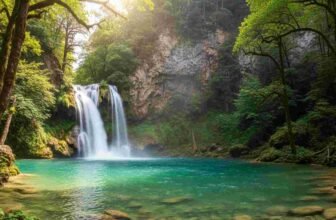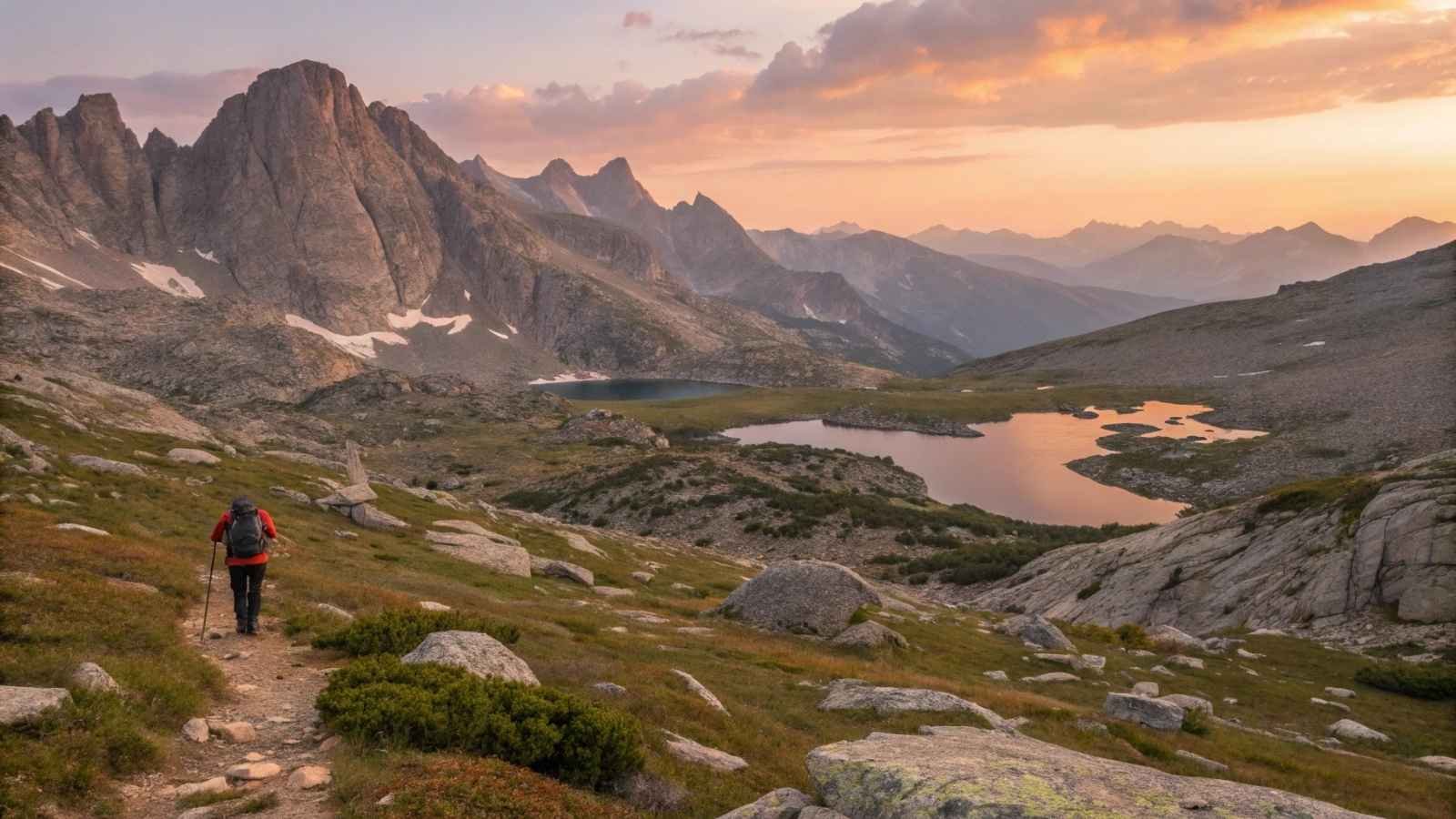
Some journeys don’t just take you across miles—they carry you into a completely different version of yourself. There’s something almost electric about loading up a pack, stepping onto a dirt path, and knowing your only job is to keep walking.
No emails, no errands—just the steady rhythm of boots on earth and thoughts unraveling with the wind. These aren’t afternoon strolls or weekend loops; they’re full-body, full-heart experiences that change how you see the world—and yourself.
If you’ve ever felt the pull of something wilder, quieter, and beautifully hard, these are the trails that belong on your bucket list.
1. Pacific Crest Trail (PCT)
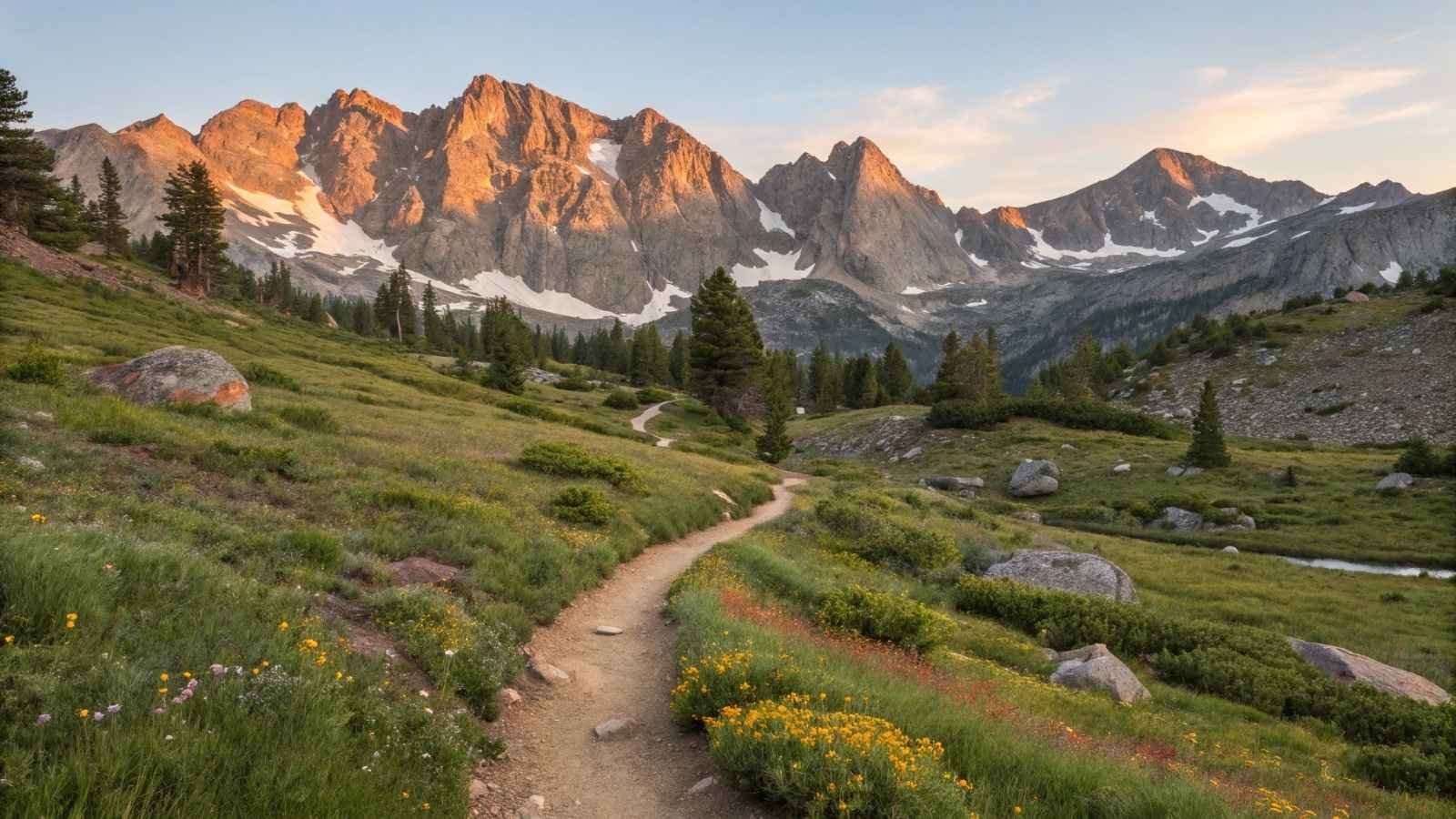
Stretching over 2,650 miles from the Mexican border in California to the Canadian border in Washington, the Pacific Crest Trail is the ultimate west coast adventure. What makes the PCT iconic is not just its length, but the way it leads hikers through desert, alpine, volcanic, and rainforest terrain—sometimes all in one week. Whether you’re trudging across the scorching Mojave or surrounded by snow-dusted peaks in the Sierra Nevada, the variety is nothing short of cinematic.
This trail has earned cult status in the hiking world for a reason. It demands respect—long water carries in the desert, tricky snow navigation in the Sierra, and mental resilience in the endless green tunnel of Oregon. But it rewards, too. Think sunset-lit mountain passes, camaraderie with fellow “PCTers,” and a chance to step entirely out of the modern rush into the rhythm of your own two feet.
Many hikers say the PCT is where they “found themselves”, but even if you’re just looking for the experience of a lifetime, it delivers. It’s not just a walk in the wilderness—it’s a walk into a different kind of life.
Quick Trail Facts:
- Distance: 2,650 miles
- States: California, Oregon, Washington
- Best Months to Hike: April–September (southbound or northbound)
- Difficulty: Very high – physical + logistical
- Permits Required: Yes (PCTA Long-Distance Permit)
- Highlights: Sierra Nevada, Crater Lake, Goat Rocks Wilderness, North Cascades
- Trail Communities: Big Bear, Ashland, Bend, Stehekin
2. Appalachian Trail (AT)
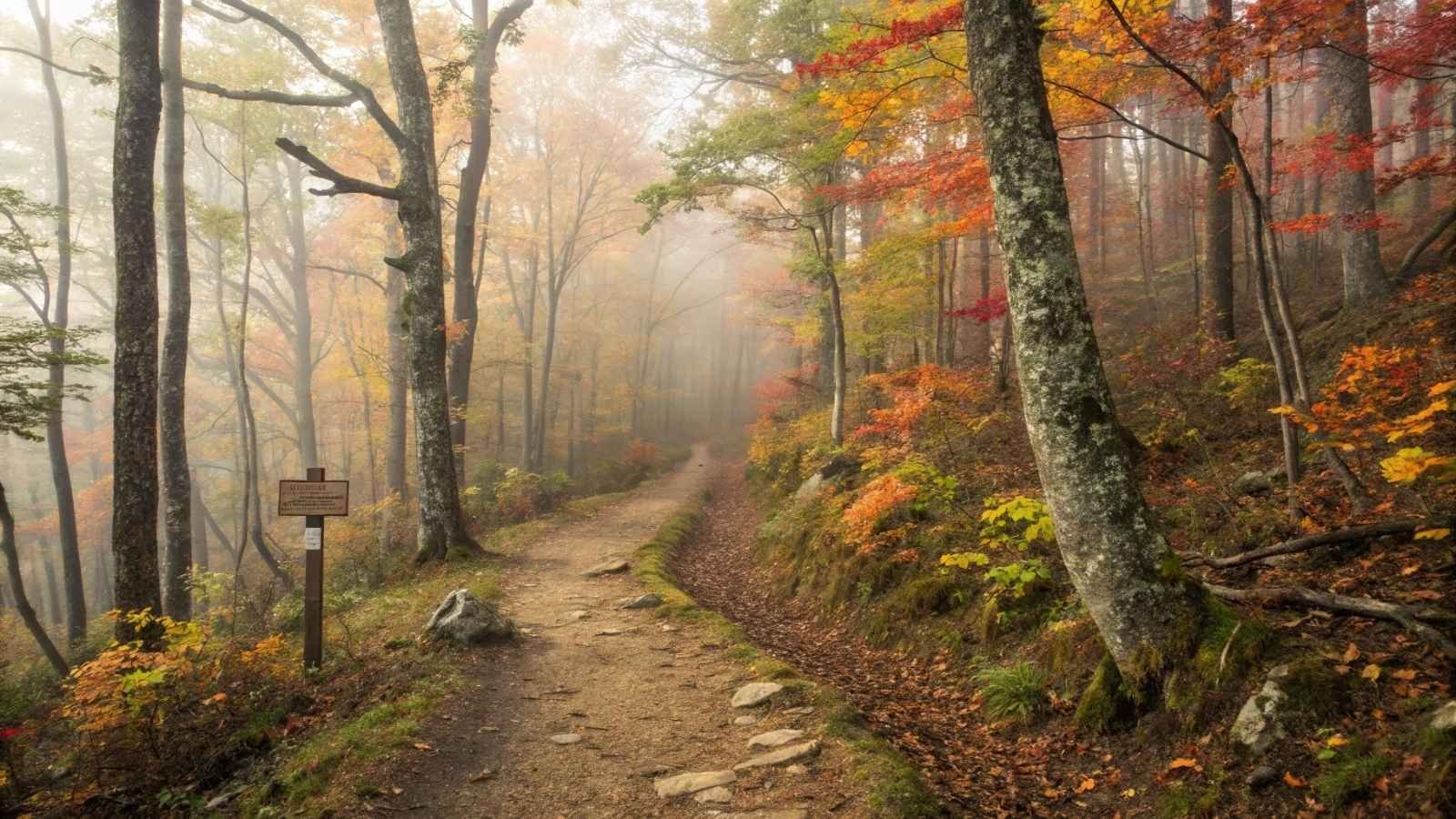
The Appalachian Trail may not have the grandeur of the West’s snow-capped peaks, but it’s got soul—and a whole lot of mud. Running about 2,190 miles from Georgia to Maine, the AT is the oldest and most social long-distance trail in the country. It weaves through 14 states, dense deciduous forests, rocky ridges, and mossy hollows, offering a deep connection to the eastern wilderness and trail history.
One of the most defining aspects of the AT is its intense elevation profile—it constantly goes up and down. Don’t let the lower elevation fool you; your knees and calves will feel every mile. But between the sweat and the blisters comes a deep satisfaction: climbing up to McAfee Knob for that iconic photo, walking through the Smoky Mountains in spring bloom, and finally reaching that weather-worn sign at Mount Katahdin in Maine.
There’s also an unshakable sense of community. Trail angels, shelters every few miles, and the “AT bubble” of fellow hikers make this journey feel like a long, quirky, beautiful summer camp for adults.
Quick Trail Facts:
- Distance: ~2,190 miles
- States: Georgia to Maine (14 states)
- Best Months to Hike: March–October (northbound) or June–November (southbound)
- Difficulty: High – terrain is physically demanding
- Permits Required: Only for specific parks (e.g., Smokies, Shenandoah)
- Highlights: Roan Highlands, White Mountains, Shenandoah NP, Mount Katahdin
- Trail Communities: Damascus, Hot Springs, Hanover, Harper’s Ferry
3. Continental Divide Trail (CDT)

The CDT is for those who want true wilderness, fewer crowds, and major bragging rights. Spanning 3,100 rugged miles, the CDT traces the spine of the Rocky Mountains from New Mexico to Montana, passing through some of the most remote backcountry in the Lower 48. This isn’t a hike for the faint-hearted—route-finding, extreme weather, and solitude are all part of the package.
But the payoff? Unparalleled wild beauty. You’ll walk across high desert mesas, through wind-blasted ridgelines, over glacier-fed streams, and into valleys few ever see. This trail offers more freedom—many sections are unmarked, and alternate routes are common. That can be not very safe, but also exhilarating.
The CDT is the quietest of the “Triple Crown” trails, which adds to its allure. Hikers often go days without seeing another soul, relying heavily on navigation skills and self-sufficiency. It’s not just a trail—it’s a test of who you are when it’s just you and the mountains.
Quick Trail Facts:
- Distance: ~3,100 miles
- States: New Mexico, Colorado, Wyoming, Idaho, Montana
- Best Months to Hike: April–September (northbound)
- Difficulty: Very High – navigation, altitude, and remoteness
- Permits Required: Varies by section (some national parks and wilderness areas)
- Highlights: San Juan Mountains, Wind River Range, Glacier National Park
- Trail Communities: Silver City, Chama, Helena, Leadore
4. John Muir Trail (JMT)
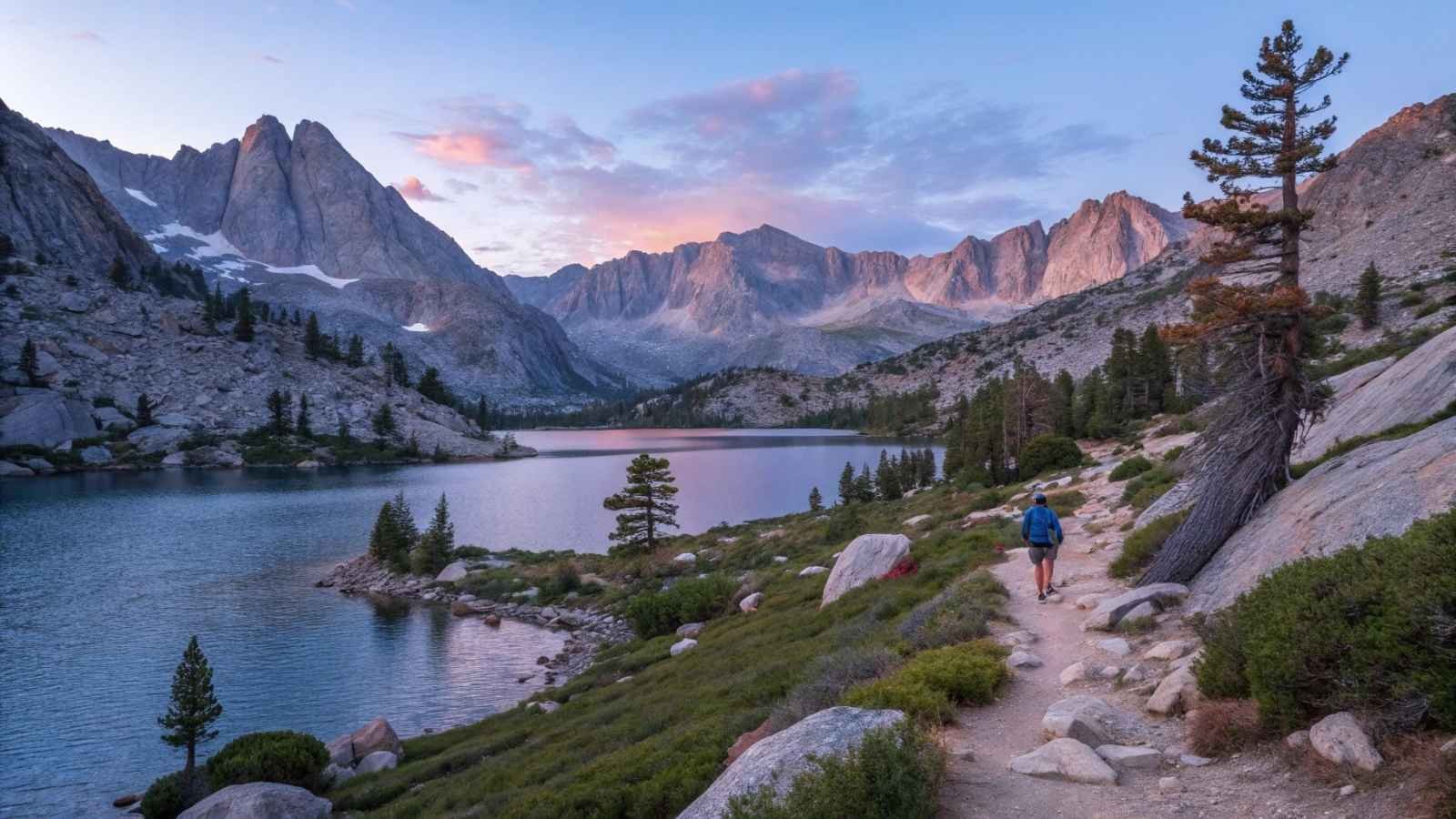
If you want jaw-dropping alpine scenery without the months-long commitment, the John Muir Trail is your go-to. At 211 miles, it’s a compact but challenging hike through the heart of California’s Sierra Nevada. From Yosemite Valley to Mount Whitney, this trail is essentially a highlight reel of the Pacific Crest Trail’s best scenery.
Every day on the JMT feels like a postcard. Think granite cliffs, alpine meadows, turquoise lakes, and sunrises over 13,000-foot passes. It’s no wonder John Muir himself was so obsessed with this region—it stirs something primal in you. The hiking is tough but doable for many experienced backpackers, and it’s one of the most photographed trails for a reason.
Though it’s not as long or rugged as others on this list, the JMT offers an immersive wilderness experience packed into a few unforgettable weeks. If you’ve got limited time but want a true high-mountain adventure, this is the one.
Quick Trail Facts:
- Distance: 211 miles
- State: California
- Best Months to Hike: July–September
- Difficulty: Moderate to High – high elevation + daily passes
- Permits Required: Yes (very competitive lottery system via Yosemite or Inyo NF)
- Highlights: Yosemite, Evolution Basin, Rae Lakes, Mount Whitney
- Trail Communities: Bishop, Mammoth Lakes, Lone Pine
5. Colorado Trail

The Colorado Trail offers a near-perfect balance of challenge, beauty, and accessibility. Stretching 485 miles from Denver to Durango, this trail serves up Rocky Mountain panoramas, wildflowers, wildlife, and solitude—all in a relatively manageable package for section hikers and thru-hikers alike.
What sets the Colorado Trail apart is its elevation and the diversity of its ecosystem. You’ll pass through six wilderness areas, eight mountain ranges, and cross alpine passes with views that make you stop mid-step. It’s a hiker’s dream: sweeping vistas, clean air, and starry nights so clear they don’t seem real.
It’s also well-maintained and has a growing reputation in the long-distance community. Plus, if you’re still testing the thru-hiking waters, this one is more accessible for most than the big three (AT, PCT, CDT), while still offering serious cred and challenge.
Quick Trail Facts:
- Distance: 485 miles
- State: Colorado
- Best Months to Hike: Late June–early September
- Difficulty: Moderate to High – high elevation, afternoon storms
- Permits Required: No general permit, but some wilderness areas require self-registration
- Highlights: Collegiate Peaks, San Juan Mountains, Elk Creek Canyon
- Trail Communities: Breckenridge, Salida, Silverton, Durango
6. Long Trail (Vermont)
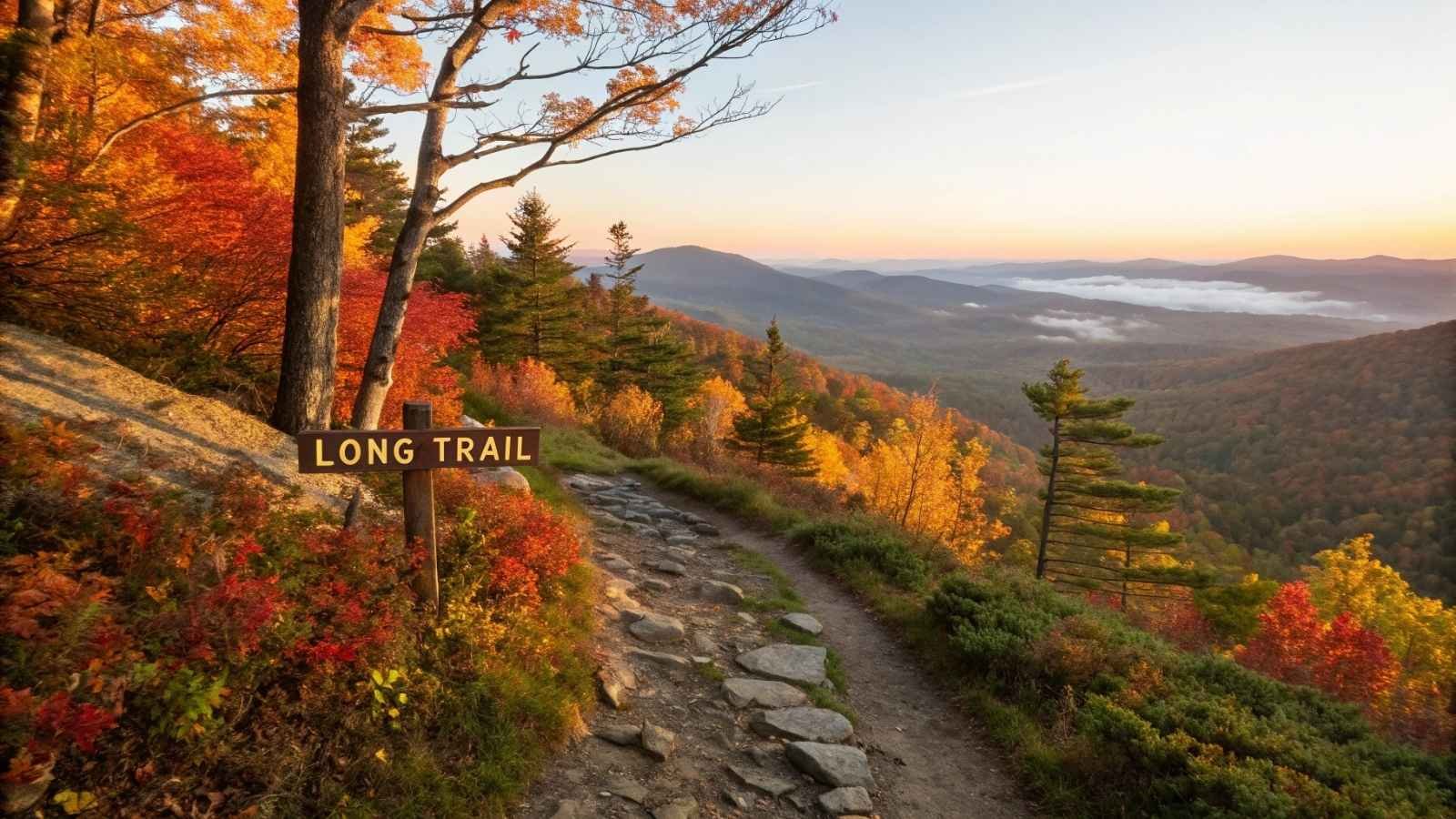
If you’re looking for a trail that feels wild but stays within reach, Vermont’s Long Trail is a classic that deserves more love. At 273 miles, it might seem modest compared to the massive thru-hikes above, but don’t underestimate this pioneering path—it’s the oldest long-distance hiking trail in the U.S., predating even the Appalachian Trail.
What makes the Long Trail so memorable isn’t just its history—it’s the raw, unfiltered green mountain wilderness. You’ll scramble up mossy rocks, cross rugged ridgelines, and wade through forests so thick they feel enchanted. While it shares the southern 100 miles with the Appalachian Trail, once it splits off, things get steep, slick, and solitary—a true test of both legs and grit.
It’s an especially great choice for hikers who want the experience of a thru-hike but don’t have six months to spare. With a two- to four-week window, you can still experience the highs, lows, and quiet triumphs of life on the trail.
Quick Trail Facts:
- Distance: 273 miles
- State: Vermont
- Best Months to Hike: Late June–October
- Difficulty: Moderate to High – rocky, rooty, and wet in places
- Permits Required: No (but shelter fees apply in some areas)
- Highlights: Camel’s Hump, Mount Mansfield, Stratton Mountain
- Trail Communities: Manchester Center, Waterbury, Johnson, North Adams (MA)
7. Wonderland Trail (Washington)
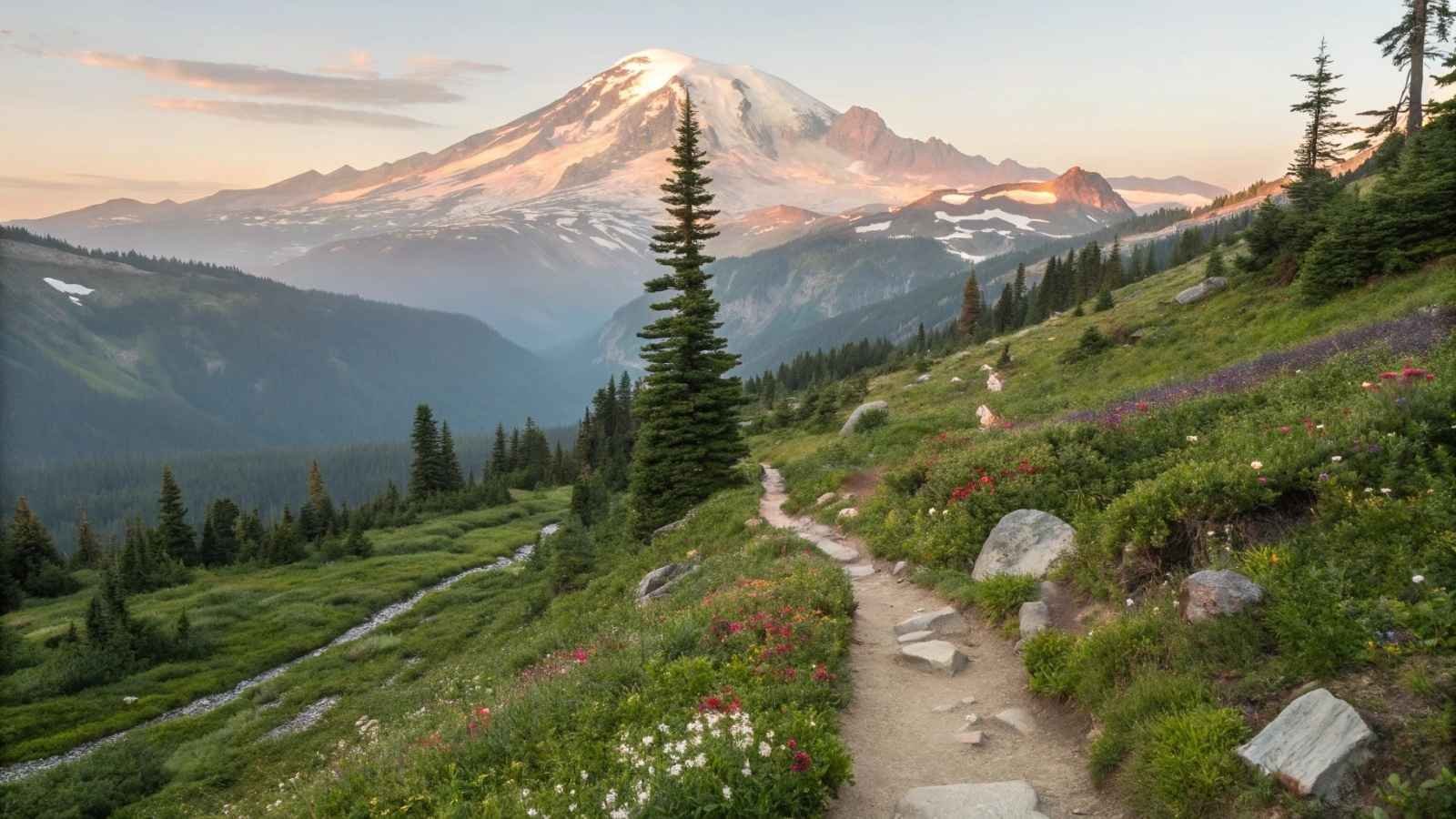
Some trails are long because they connect distant places. Others—like the Wonderland Trail—wrap around a single destination so breathtaking, it deserves its 93-mile pilgrimage. Circling Mount Rainier, this trail offers an unforgettable loop through glacial valleys, subalpine meadows, deep forests, and lunar-like ridgelines.
Don’t be fooled by its relatively short mileage. The Wonderland is tough—you’ll gain and lose over 22,000 feet of elevation as you wind your way around the massive volcano. But with every climb comes a reward: endless wildflower fields, roaring waterfalls, and jaw-dropping views of Mount Rainier from nearly every angle.
Because it’s a loop, logistics are smoother, and the terrain—though demanding—feels incredibly dynamic. In just a few days, you’ll pass through more ecological zones than most thru-hikes offer in hundreds of miles. It’s a bucket-list hike for good reason—and one that often turns first-timers into lifelong backcountry wanderers.
Quick Trail Facts:
- Distance: 93 miles
- State: Washington
- Best Months to Hike: Late July–September
- Difficulty: High – elevation gain and terrain
- Permits Required: Yes (very competitive reservation system)
- Highlights: Indian Bar, Panhandle Gap, Spray Park, Emerald Ridge
- Trail Communities: Ashford, Longmire, Sunrise, White River



